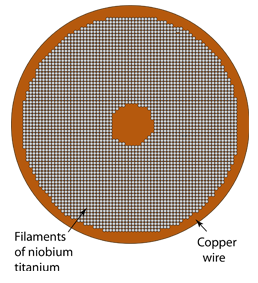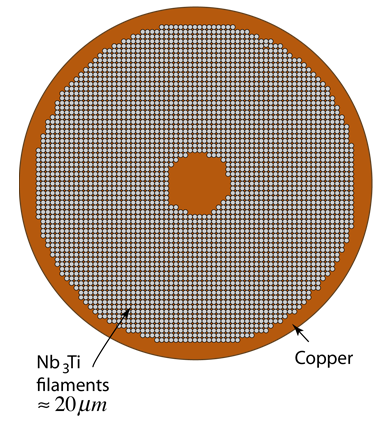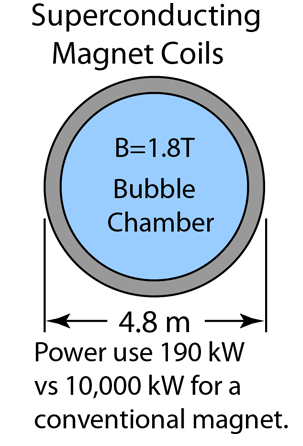Niobium-Titanium Superconductor
Niobium-titanium is a Type-II superconductor with a critical temperature of 10 K and a critical magnetic field of 15 Tesla. While both of these values are lower than those for niobium-tin, this material has become the material of choice for superconducting magnets because of its mechanical properties.
 | To make magnet wire, the niobium-titanium is formed into filaments finer than human hair and embedded in a matrix of solid copper. The fine filaments are advantageous because current flows only within a skin-depth of the surface of a superconductor. The solid copper forms a solid mechanical structure which will also carry the current if the superconducting phase is lost. |
| Further detail |
Superconductivity concepts
Reference Batlogg
| HyperPhysics***** Condensed Matter | R Nave |

